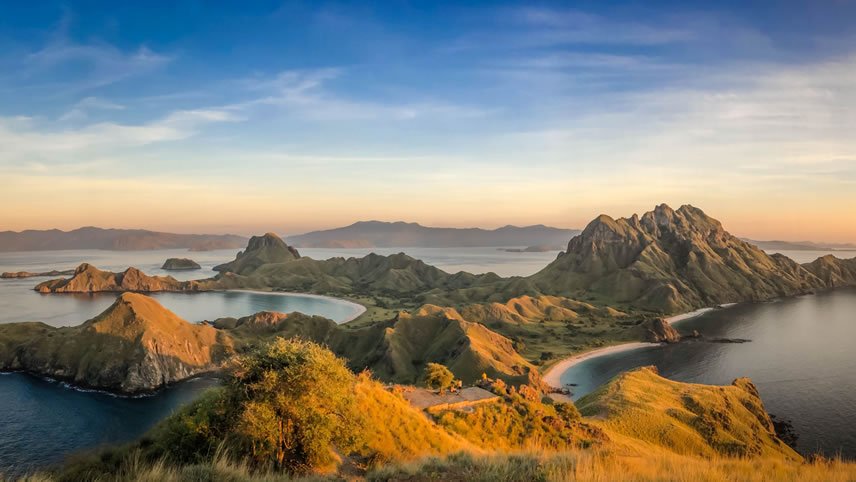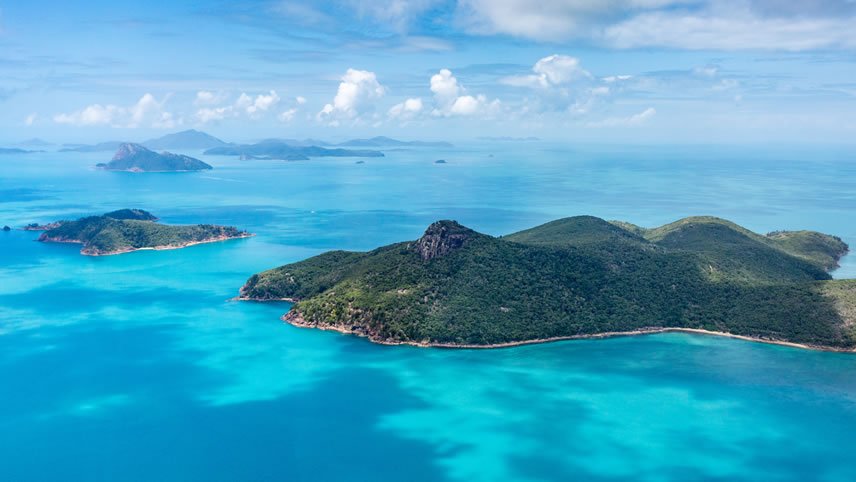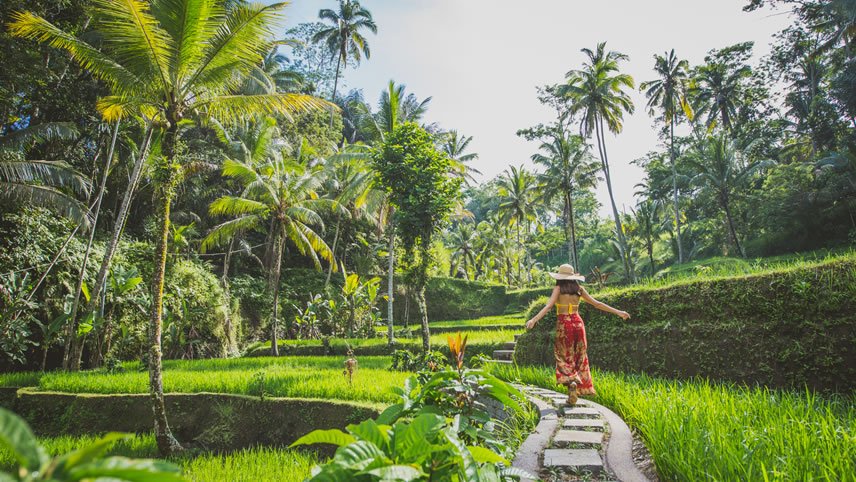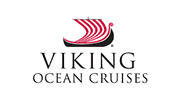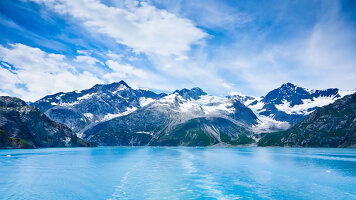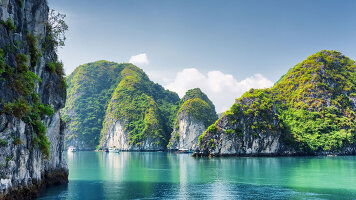Overview
Itinerary
Embark your ship and settle into your stateroom. Sydney was founded as a penal colony in 1788 and is celebrated for its magnificent natural harbor. It has grown into the major cultural center of Australia, beloved for its all-embracing, free-spirited nature. The cultural jewel in its crown is the iconic Sydney Opera House, a UNESCO World Heritage Site nestled harborside like a gleaming white bird taking wing. Adjacent, the Royal Botanic Garden displays one of the world's most important horticultural collections across its 70 acres of flora-lined pathways.
Trace the scenic Australian coastline, indigenous people inhabited the continent for 60,000 years prior to European discovery. Enjoy the amenities of your ship as you sail. Perhaps take a breath of fresh air on a brisk walk around the Promenade or begin your day with a workout in the well-equipped Fitness Center.
Mooloolaba sits at the mouth of its namesake river, along the shores of the Sunshine Coast. The town derives its name from the Aboriginal word mulu (“snapper fish”) or mulla (“red-bellied black snake”). Its all-weather harbor is home to a fleet of fishing vessels and also draws large numbers of pleasure boaters. Benefiting from a year-round tropical climate, Mooloolaba is renowned for its stunning beaches and gentle waves. The lively Esplanade is an attraction for locals and visitors alike, combining sweeping views of the coastline with many dining and entertainment venues.
Follow the route of English explorer James Cook, who famously laid eyes on Australia's “Sunshine Coast” from the deck of the HMS Endeavour. As you sail, take advantage of the array of delicious cuisine offered on board. You may visit Mamsen's, our casual gourmet deli, any time from early morning to late at night for a taste of traditional Norwegian fare. Or, dine at Manfredi's and savor an authentic Italian meal, with options ranging from Milanese risotto to Tuscan inspired classics.
The Whitsunday archipelago emerges from the Coral Sea amid the Great Barrier Reef. The seafaring Ngaro people called this paradise home until 1870 and hunted these waters in bark canoes. Nature's brushstrokes are astonishing here: pure-white sands meet cerulean waters, swirling together at sandbars to merge into a palette of turquoise, cream and emerald-green hills. Glassy, invigorating and impossibly blue, the waters provide the ideal oasis for relaxing and idling away a few hours on the beach.
Queensland's seaside resort town, Cairns is the gateway to a rich array of natural beauty onshore and off. Catamarans take marine lovers to the Great Barrier Reef; stretching for 1,400 miles, it is the largest continuous coral reef system on Earth. Inland, the wet tropics have given rise to Daintree and Kuranda National Parks, vast rainforest systems of extraordinary biodiversity and a profusion of birdlife. For all its appeal to outdoor enthusiasts, Cairns' thriving culture is a pleasure to absorb from the outdoor cafés or along the scenic waterfront promenade.
Cairns, a vibrant city on the shores of the Coral Sea, is more than a launchpad to nature's marvels. The city itself exudes a dynamic urban vibe. Its Esplanade is a lively promenade where locals and visitors converge, while in the Cairns Marina, catamarans and yachts set sail toward the Great Barrier Reef—a living, multi-hued expanse of coral and marine life. Cairns also has a deep connection to the Indigenous peoples of the Aboriginal and Torres Strait Islander cultures, who for tens of thousands of years have woven Dreamtime stories into the land and sea.
Traverse the mineral-rich waters of the Coral Sea, where the world-renowned Great Barrier Reef welcomes divers to explore its spectacular marine life. As you sail today, savor a range of international cuisine on board. Choose from a variety of international flavors at the World Café, enjoy al fresco dining on the Aquavit Terrace, or regional specialties in The Restaurant.
Thursday Island was once home to a thriving pearl fishing industry. From the late 19th century, divers came from Japan, Malaysia and India to harvest these precious stones. The diving has declined, but traces of Asia's diverse influences remain. The island's Green Hill Fort was built during the 1890s with growing concerns of a potential Russian invasion. The fort was shut down just 30 years later and reactivated during World War II as a wireless station. Many islanders, still to this day, abide by a no-footwear policy out of respect for the spirits of their ancestors.
Trace the route of early civilizations as you sail the Arafura Sea. During the Ice Age, entire populations were once able to walk between continents, exchanging languages and customs. As you sail, explore our well-curated Library, tucked in a private alcove of the Living Room, and select from a broad range of titles. Read a book by the Main Pool, a calming oasis in any weather with its retractable roof, allowing for year-round swimming.
Darwin is the cultural hub of the continent's northernmost region. The laid-back city got its name after the HMS Beagle sailed into the harbor during a surveying expedition in 1839. The famed naturalist Charles Darwin was so esteemed that its captain named this newest discovery for him. Today, it is the largest city in the thinly populated Northern Territory state. It boasts a rich and lively arts and culture scene, much of it centered on the Museum and Art Gallery of the Northern Territory. Its collection of art and artifacts reflects the region and its indigenous people.
Follow in the footsteps of Indonesia's indigenous people and sail the Timor Sea. This stretch of water shares its name with the independent state of East Timor, which lies to its north. Meet fellow guests and listen to the soothing sounds of classical music in the Living Room, an ideal setting for relaxation. Enjoy a cup of coffee or sip on a refreshing cocktail.
Komodo National Park spans 670 sq miles, encompassing 26 small isles and the three larger islands of Padar, Komodo and Rinca. Lesser known than neighboring Komodo Island, Rinca is an ideal location to see the world-famous Komodo dragon. The largest lizard in the world, these breathtaking creatures can grow up to ten feet long and typically weigh about 150 pounds. Wild pigs and water buffalos also inhabit Rinca, as well as saltwater crocodiles. A visit to the mangrove forests of Loh Buaya Park provides visitors with the opportunity to view these reptiles up close.
With a thriving arts scene, lush beauty and magnificent seaside vistas, Bali has long beckoned travelers in search of ultimate beauty. The island's rich Hindu culture has forever held that gods live in all things natural—from mountains to streams to pebbles on the beach—lending the island a peaceful air. Denpasar is the island's thriving capital. Founded as a market town, it still bustles with colorful stalls and vast emporiums selling bright sarongs and intricately patterned batik.
With its distinct flavors and traditions, Bali's food culture stands apart from that of the rest of Indonesia. Indigenous ingredients, recipes and techniques blend with influences from the island's Chinese and Indian heritages to create dishes found nowhere else. For many, a daily ritual may involve shopping for ginger, turmeric and kaffir lime in spice markets or for fruits, vegetables and meats in a pasar pagi. Traditional warungs, tiny family-owned food stands, often specialize in a particular dish, such as babi guling (suckling pig) or bebek betutu (crispy duck).
Sail one of the world's most successful commercial trade routes in history. The countless crates of spices carried over the Java Sea reportedly contributed to the famed Dutch Golden Age. As you sail today, attend an informative lecture or watch a film in our state-of-the-art theater. A range of insightful TED Talks and desination-inspired seminars are offered daily.
Java is Indonesia's repository of history and island culture. The bustling port of Semarang was founded by the Dutch and hints of the island's colonial past dot the cityscape. Outside the city, Borobudur, the largest Buddhist monument in the world, strikes a dramatic pose against a backdrop of four volcanoes. A popular place of pilgrimage and a UNESCO World Heritage Site, the massive pyramidal temple towers to a great height. The devout walk up a clockwise path to the pinnacle, passing 2,672 reliefs and 504 Buddha statues along the way.
Jakarta is a melting pot of cultures and a bustling capital. The city has been important to trade since the 4th century; it was founded as Sunda Kelapa, a significant trading port for the Sunda Kingdom, the Hindu realm that once occupied this area. The Dutch arrived in 1619 to establish the Dutch East Indies, renaming the city Batavia and proclaiming it their capital. Nutmeg, cloves, cinnamon and more were exported from here. During the Japanese occupation of World War II, the Dutch were expelled and the city took its current name, which it retained after independence.
Jakarta is an enormous mélange of cultures imported from Indonesia's 6,000 inhabited islands. Whether strolling the capital's outdoor markets or dining at a high-end restaurant, the city's menus reveal a cornucopia of cuisines that reflect the varied traditions of today's Jakartans. The local Betawi food is the culmination of centuries of Malay, Chinese, Javanese and other influences. Gado-gado, salad in peanut sauce, is one popular dish. Countless variations of skewered meats, fried rice and dumplings are also on offer.
Sail the Java Sea and navigate a vast archipelago of lush beauty. Today's nation of Indonesia encompasses more than 13,000 islands. Renew your body, mind and spirit in our Scandinavian-inspired Spa, a Nordic sanctuary of holistic wellness, today while at sea. Whether you unwind in the Sauna, refresh in the Snow Grotto or take a dip in the Thermal Pool, you will feel recharged and revitalized.
Singapore is the world's only island city-state. Established in 1819 for the East India Company by Sir Stamford Raffles, after whom the famed hotel is named, it grew from a secluded backwater into a shabby port city before transforming itself into a sophisticated metropolis. The technology and economy are highly advanced here, yet the islands host plentiful green parks with tree-lined footpaths and the stunning National Orchid Garden. For a panoramic view of it all, the observation deck of the Marina Bay Sands towers offers the perfect solution.
Singapore transformed from a sparse island to the economic giant of Southeast Asia. Malays, Indonesians, Indians, Sri Lankans and Chinese have all contributed to the city's rise as one of the world's most technologically advanced cities. Buddhist, Hindu and Taoist temples rub elbows with Muslim mosques and Christian churches, alongside street signs in English, Chinese, Tamil and Malay. Singaporean cuisine, too, has been shaped by the many cultures that have converged here; there is no better place to sample local fares than at one of the city's many open air food courts. After breakfast, disembark your ship and journey home.
Life Onboard Viking Sky
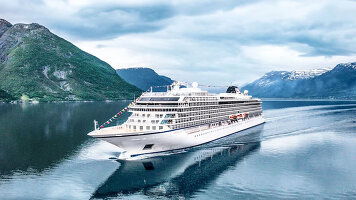
Launched in 2017, the Viking Sky is an all-veranda ship, part of a fleet of award winning, state of the art ships incorporating all the comforts & luxuries you would expect from Viking. Read more
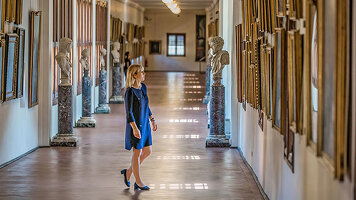
Viking are destination experts. With no casinos or children on board, you can be assured that the focus is firmly on enrichment and education. Read more

After a day of exploration or just to enhance the relaxation of a day at sea, the on-board Spa will leave you feeling recharged and revitalized. Read more
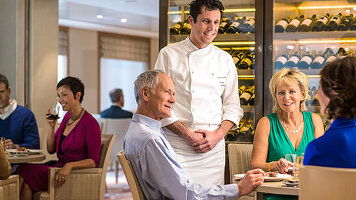
Viking offer eight on board dining options. Beer, wine and soft drinks are available with lunch and dinner at no additional charge of fee. Read more

Viking proudly includes all that you need and nothing you do not. A variety of features and services valued at $200 per person per day are standard inclusions in your cruise. Read more
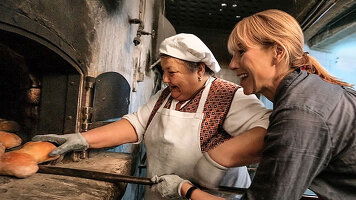
Viking include one complimentary shore excursion in every port of call. Enjoy exclusive entry to cultural treasures and seldom-seen collections around the world. Read more

Trip Reviews (5) Most Recent 'Treasures of Australia & Indonesia' Reviews
The only downside for us was ...read more the airline choice and final booking for flights seemed rushed with limited options. I realise we chose Singapore Airlines economy but on reflection it was a poor choice, crowded and uncomfortable. I think more time and advice from Global Journeys should have been available. The return flight took the shine off the experience.
The Baltic offers so much in scenery, culture and history in a compact area and charming ports along the way. We love the mid-size ships and there was no hassles or queues getting off or on, the organisation was well done. We were blessed with wonderful weather everywhere which even Viking couldn’t have planned, only two showers in the whole two weeks, so all the warm clothing and raincoats were hardly needed. Read more about Vikings cruises, it’s all true and book through Global Journeys, they never let us down.
Iceland was amazing and provided stunning scenery. The trip to the Golden Triangle was well worthwhile as an optional extension trip. The days at sea between Iceland and the Faroes and Faroes to Norway were relaxing and filled with interesting activities. Faroe Islands also had much to offer and the stop at Torshavn and included tour gave a real insight into the life of this remote place. The 4 stops in Norway were also lovely and the trips to Geiranger and Flam were excellent with great shore excursions by coaches winding up amazingly steep mountains with spectacular views.
Everything about the trip and Viking was excellent - so much so that we've booked another Viking ocean cruise for next year. Viking has spoilt us for all other cruise lines and we won't be looking further when seeking a company for our future cruising holidays. Thanks Jemma and Viking for a memorable and wonderful time.
Brochure
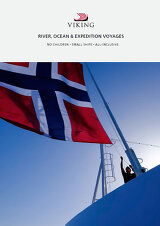
Viking River, Ocean & Expedition Voyages (2025-27)
Availability
 USD
Port charges, taxes and fees included.
USD
Port charges, taxes and fees included.
Viking Cruise $25 Deposits!
Tour & cruises prices are per person. Prices shown have savings applied, are subject to availability and may be withdrawn at any time without notice. Pricing and trip details are correct at this point in time, however are subject to confirmation at the time of booking and are subject to change by Viking. For cruise itineraries, cabin images are sourced from Viking. These should be treated as indicative only. Cabin inclusions, upholsteries and room layout may differ to the image(s) shown depending on the ship selected and your sailing dates.
